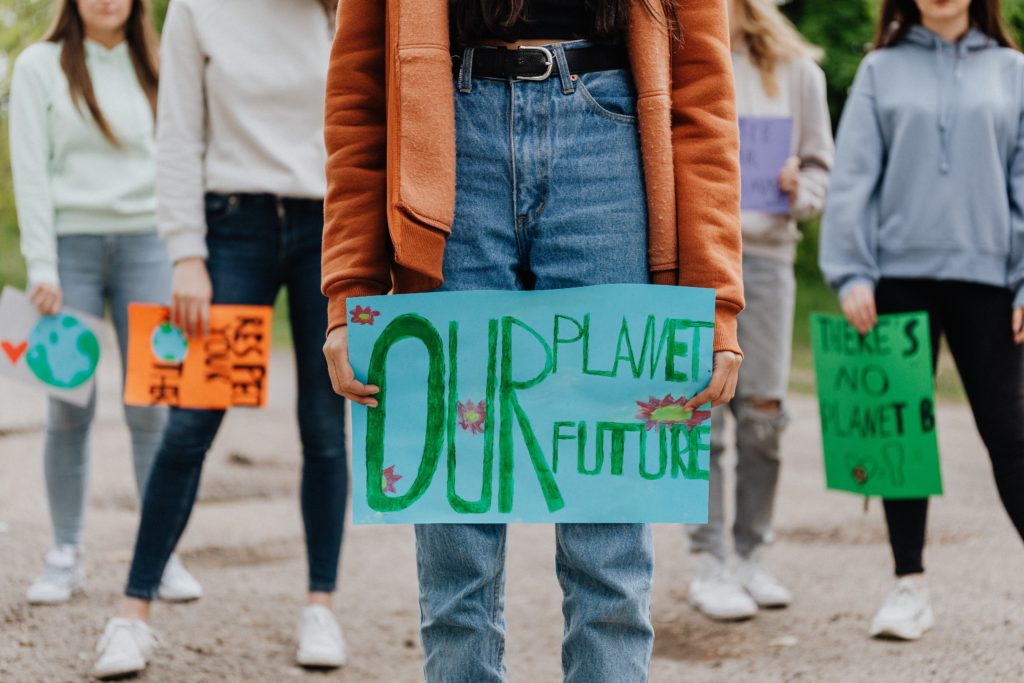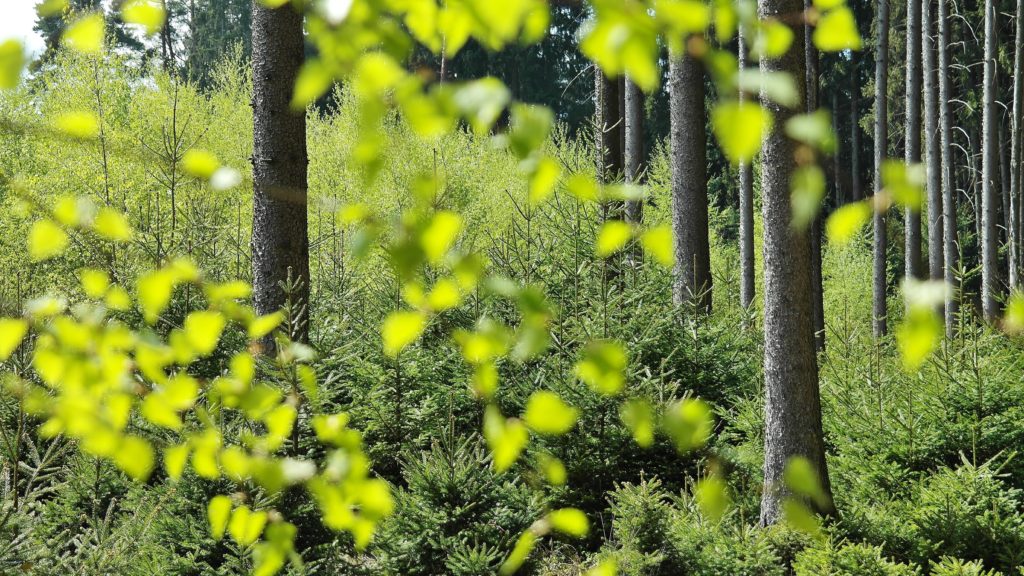There can be an overwhelming feeling when it comes to climate change. It is a complex issue, and many unknowns remain as far as future impacts on our planet are concerned.
Although true solutions to curb climate change require global action and being environmentally friendly, you can reduce your impact on the environment by making small choices each day.
What is Climate Change?

Climate change is a long-term shift in the weather pattern and temperature. Occasionally, shifts in the solar cycle may cause these shifts. Due to the burning of fossil fuels like coal, oil, and gas since the 1800s, human activities have been the primary cause of climate change.
Carbon dioxide can also be released when land and forests are cleared. Methane emissions come primarily from landfills for garbage. Some other factors contribute to emissions, including energy, industry, transport, buildings, agriculture, and land use.
It is important for people to live eco-friendly lives by sticking with eco-friendly products, eco cleaning, eco-friendly gifts, and sustainable gifts as much as possible. The earth would be grateful!
Causes of Climate Change
1. Power generation
Fossil fuels, such as coal, oil, and gas, are used to generate electricity and heat, which contribute significantly to global warming. This results in powerful greenhouse gases such as carbon dioxide and nitrous oxide.
It is only recently that people are shifting towards eco-friendly and renewable sources such as wind, solar, and other sources that produce little to no greenhouse gas emissions or pollutants.
2. Product manufacturing
The combustion of fuel is responsible for most of the emissions produced by manufacturing and industry, such as iron, cement, steel, plastics, electronics, clothes, and other products. As with mining, construction releases gases as well.
Some materials, such as plastics, are made of chemicals derived from fossil fuels. Manufacturing machines are often powered by coal, oil, or gas. Globally, manufacturing produces a large amount of greenhouse gas emissions.
3. Deforestation
Trees that are cut down for pastures or farms, or other reasons, release carbon into the atmosphere when they are cut down. Approximately 12 million hectares of forest are destroyed each year.
By destroying forests, nature also reduces its ability to keep emissions out of the atmosphere, since forests absorb carbon dioxide. Global greenhouse gas emissions are primarily caused by deforestation, agriculture, and other land use changes.
4. Transportation
There are many kinds of vehicles powered by fossil fuels, including cars, trucks, ships, and planes. Transport contributes significantly to greenhouse gas emissions, especially carbon dioxide.
The transportation sector contributes nearly a quarter of the global carbon dioxide emissions from energy. Future trends indicate that energy use for transportation will increase significantly. We need to adopt eco-friendly means of transportation.
5. Food production
Food production leads to the release of greenhouse gases, including methane, carbon dioxide, and other gases.
These include processes that are not eco-friendly, such as deforestation, clearing agricultural lands, raring of animals, fertilizers and manure production and use, as well as the use of fossil fuels for farm equipment and fishing boats.
Food production plays a major role in climate change. Also, the packaging and distribution of food emit greenhouse gases, which are not environmentally friendly.
6. Electricity
Over half of all electricity is consumed by residential and commercial buildings worldwide. They emit significant amounts of greenhouse gases as they continue to use coal, oil, and natural gas for heating and cooling.
Since the early 2000s, energy-related carbon dioxide emissions from buildings have increased due to a rise in heating and cooling demand alongside an increase in air-conditioner ownership.
To have eco-friendly homes, it is best to use alternative energy sources from environmentally friendly companies. You can also use sustainable materials for building and eco gadgets.
7. Excessive consumption
You contribute to greenhouse gas emissions through your home and use of electricity, your movement, what you eat, and how much you throw away. Clothing, electronics, and plastics consumption also contribute to global warming.
Domestic greenhouse gas emissions account for a significant portion of global emissions. The way we live impacts the environment profoundly. Globally, the richest 1% account for more greenhouse gas emissions than the poorest 50% combined.
Always use eco alternatives such as eco-friendly home products, biodegradable packaging materials, and other eco-friendly household products.
Effects of Climate Change
Climate change can greatly affect the environment and prevent eco-friendly living. Some impacts on our planet are explained below.
1. An increase in temperature
The global surface temperature rises as greenhouse gas concentrations increase. It has been the hottest decade on record for the last decade.
Throughout the 20th century, each decade has been warmer than the last. Heat waves and hot days are becoming more common across nearly all land areas.
It is more difficult to work outdoors when the temperature is high due to heat-related illnesses. Hotter weather facilitates the spread of wildfires. There has been a double increase in temperature in the Arctic over the past century.
2. Stronger storms
Many regions have experienced more intense and frequent destructive storms. Increased temperatures cause more moisture to evaporate, resulting in more flooding and severe storms.
Tropical storm frequency and intensity are also affected by ocean warming. Ocean surface warm waters feed hurricanes, typhoons, and cyclones. In such storms, homes and communities are often destroyed, resulting in a great deal of economic loss and deaths.
3. Intense drought
There are more regions where water is scarce as a result of climate change, poor eco-friendly living, and inadequate environmentally friendly choices.
Water shortages are exacerbated by global warming in already water-stressed regions, increasing the risk of agricultural drought affecting crops and ecological drought affecting ecosystems.
During droughts, sand and dust storms can spread across continents, causing destruction. There is a shortage of land for growing food due to the expansion of deserts. Water scarcity now threatens many people regularly.
4. Warm and rising oceans
Global warming is mostly absorbed by the ocean. Over the past two decades, the ocean has warmed strongly at all depths. Water expands as it gets warmer, so as the ocean gets warmer, its volume increases. As sea levels rise due to melting ice sheets, coastal and island communities are also threatened.
Aside from absorbing carbon dioxide, the ocean also absorbs water. However, more carbon dioxide causes the ocean to become more acidic, which threatens marine life and coral reefs.
5. Species extinction
A changing climate poses a threat to the survival of marine and terrestrial species. As temperatures rise, these risks increase.
The loss of species around the world is 1,000 times greater than at any time in recorded history, exasperated by climate change. Within the next few decades, one million species could go extinct.
There are many threats associated with climate change, including forest fires, extreme weather, and invasive pests and diseases. There will be species that can relocate and survive, and there will be species that cannot.
6. Insufficient food
An increase in extreme weather events and climate change are contributing factors to global hunger and malnutrition. Crops, livestock, and fisheries may suffer damage or become less productive.
Millions of people rely on marine resources for their food as the ocean becomes acidic. Food supplies from herding, hunting, and fishing have been disrupted in many Arctic regions due to changes in snow and ice cover. Water and pastures for grazing can be diminished by heat stress, adversely affecting crop yields and livestock.
7. Increased health risks
The biggest threat to our health is climate change. In places where people cannot grow or find sufficient food, air pollution, disease, extreme weather events, and forced displacement are already harming health.
Around 13 million people die as a result of environmental factors every year. Healthcare systems are having a hard time keeping up with the demands of changing weather patterns, which are resulting in the expansion of diseases. Extreme weather events also increase deaths.
8. Displacement and poverty
A changing climate exacerbates the factors that lead to poverty and keep it there. Homes and livelihoods may be destroyed by floods in urban slums. It can be difficult to work outdoors when it is hot. Crops may suffer from water shortages.
Weather-related events have displaced at least 23.1 million people annually in the past decade, making them much more vulnerable to poverty. The majority of refugees come from countries most vulnerable to the impacts of climate change and least prepared to adapt to them.
Dealing with Climate Change
The world needs to be more eco-friendly and dramatically reduce its carbon emissions to avoid the worst impacts of climate change.
Globally, EcoLivingHive seeks to help nature and people prepare for the many impacts of climate change through partnerships with local communities, governments, and other organizations.
To accomplish this, we will:
- Develop new farming techniques, monitor community weather, and create seed banks to increase resilience
- Protect marine turtle nests by restoring beach vegetation
- Ensure elephants have access to fresh water during droughts
- Develop polar bear habitats that can withstand decades of sea ice in the Arctic
Safeguarding Forest Reserves

A number of the world’s most endangered animals live in forests. They absorb carbon dioxide, a major contributing factor to global warming.
To combat climate change, EcoLivingHive saves forests. Our approach is as follows:
- Assist in reducing forest destruction and degradation and protecting wildlife through global climate change agreements
- Protect forests and improve local livelihoods by working directly with countries, particularly developing ones
- Track illegal logging using satellite images and aerial mapping
- Explore ways to help forests adapt to climate change and study their vulnerability
Conclusion
A changing climate can have an impact on our health, food production, housing, safety, and work. People in small island nations and other developing countries are already more vulnerable to the effects of climate change.
Prolonged droughts have placed people at risk of famine as a result of sea-level rise and saltwater intrusion. There will be a rise in the number of “climate refugees” in the future.
To prevent climate change and save the environment, we must change our lifestyles and become more eco-friendly and have sustainable living habits.







